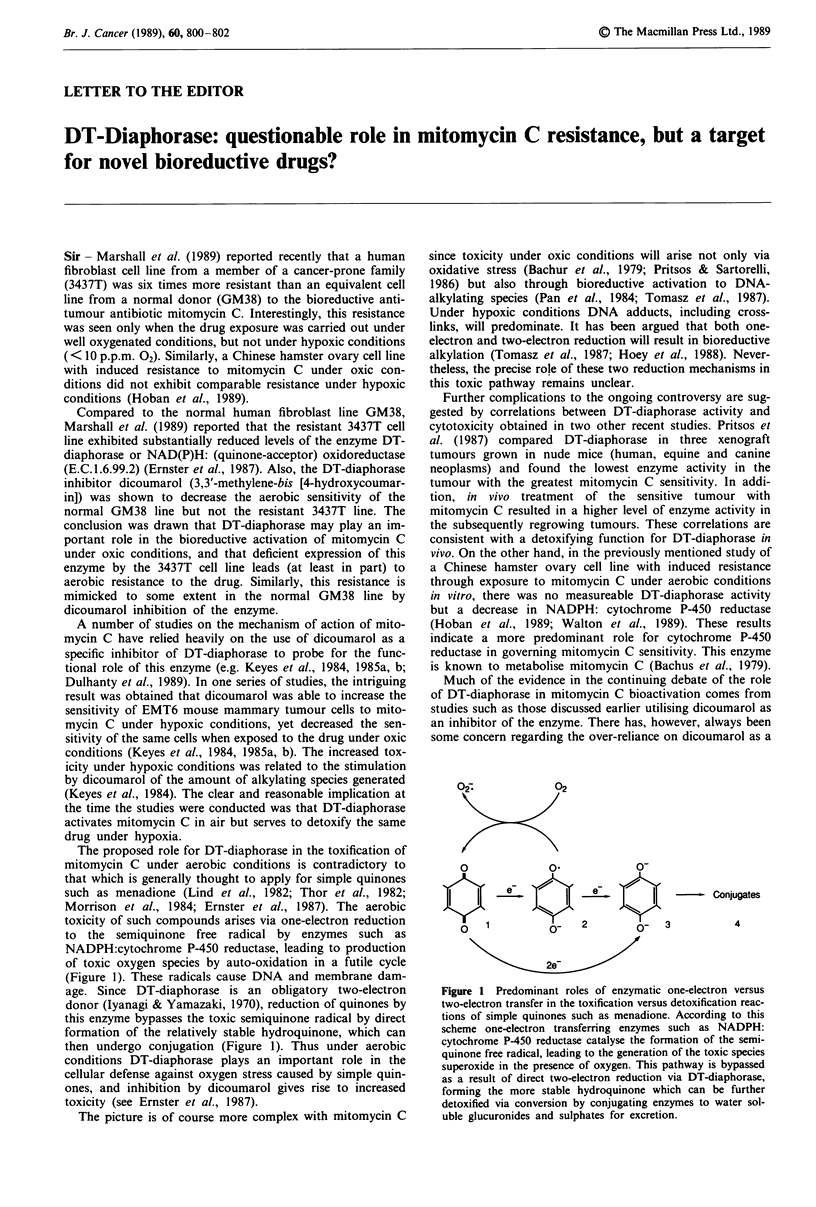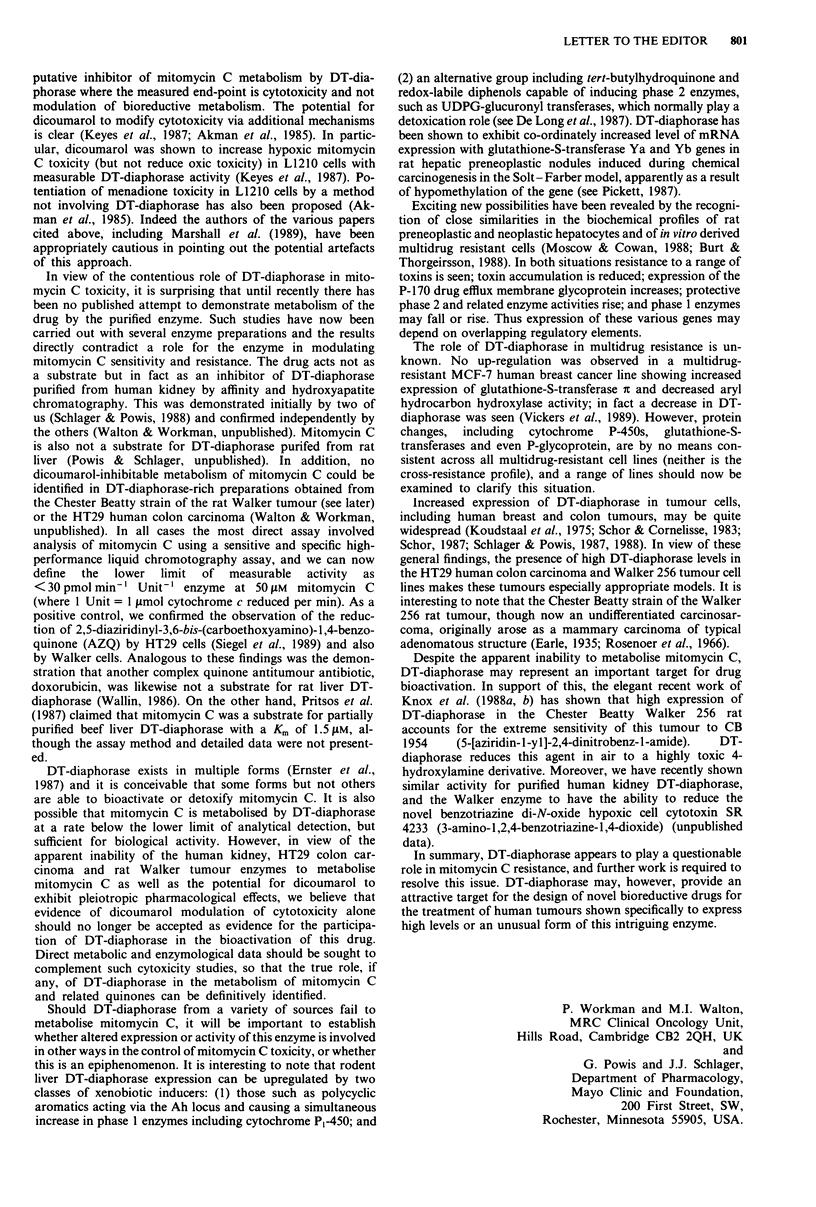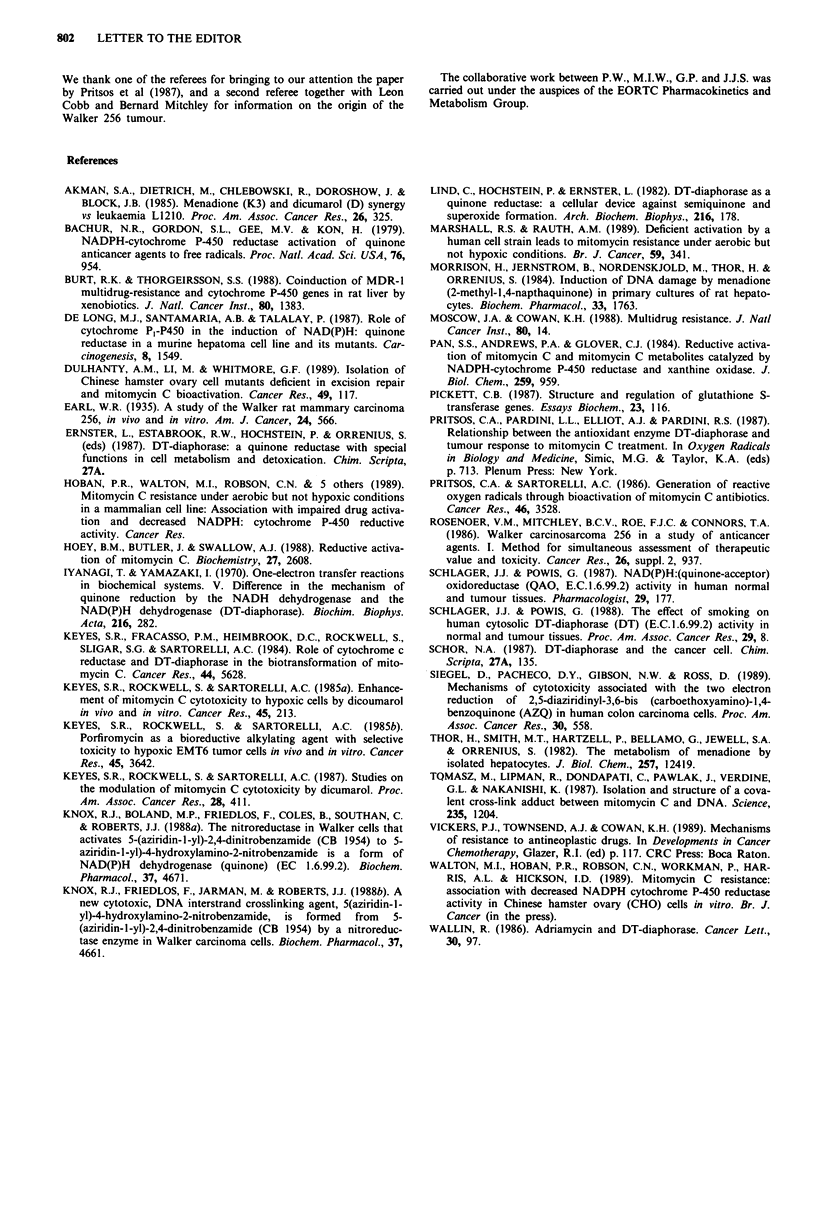Full text
PDF


Selected References
These references are in PubMed. This may not be the complete list of references from this article.
- Bachur N. R., Gordon S. L., Gee M. V., Kon H. NADPH cytochrome P-450 reductase activation of quinone anticancer agents to free radicals. Proc Natl Acad Sci U S A. 1979 Feb;76(2):954–957. doi: 10.1073/pnas.76.2.954. [DOI] [PMC free article] [PubMed] [Google Scholar]
- Burt R. K., Thorgeirsson S. S. Coinduction of MDR-1 multidrug-resistance and cytochrome P-450 genes in rat liver by xenobiotics. J Natl Cancer Inst. 1988 Nov 2;80(17):1383–1386. doi: 10.1093/jnci/80.17.1383. [DOI] [PubMed] [Google Scholar]
- De Long M. J., Santamaria A. B., Talalay P. Role of cytochrome P1-450 in the induction of NAD(P)H:quinone reductase in a murine hepatoma cell line and its mutants. Carcinogenesis. 1987 Oct;8(10):1549–1553. doi: 10.1093/carcin/8.10.1549. [DOI] [PubMed] [Google Scholar]
- Dulhanty A. M., Li M., Whitmore G. F. Isolation of Chinese hamster ovary cell mutants deficient in excision repair and mitomycin C bioactivation. Cancer Res. 1989 Jan 1;49(1):117–122. [PubMed] [Google Scholar]
- Hoey B. M., Butler J., Swallow A. J. Reductive activation of mitomycin C. Biochemistry. 1988 Apr 5;27(7):2608–2614. doi: 10.1021/bi00407a051. [DOI] [PubMed] [Google Scholar]
- Iyanagi T., Yamazaki I. One-electron-transfer reactions in biochemical systems. V. Difference in the mechanism of quinone reduction by the NADH dehydrogenase and the NAD(P)H dehydrogenase (DT-diaphorase). Biochim Biophys Acta. 1970 Sep 1;216(2):282–294. doi: 10.1016/0005-2728(70)90220-3. [DOI] [PubMed] [Google Scholar]
- Keyes S. R., Rockwell S., Sartorelli A. C. Enhancement of mitomycin C cytotoxicity to hypoxic tumor cells by dicoumarol in vivo and in vitro. Cancer Res. 1985 Jan;45(1):213–216. [PubMed] [Google Scholar]
- Keyes S. R., Rockwell S., Sartorelli A. C. Porfiromycin as a bioreductive alkylating agent with selective toxicity to hypoxic EMT6 tumor cells in vivo and in vitro. Cancer Res. 1985 Aug;45(8):3642–3645. [PubMed] [Google Scholar]
- Knox R. J., Boland M. P., Friedlos F., Coles B., Southan C., Roberts J. J. The nitroreductase enzyme in Walker cells that activates 5-(aziridin-1-yl)-2,4-dinitrobenzamide (CB 1954) to 5-(aziridin-1-yl)-4-hydroxylamino-2-nitrobenzamide is a form of NAD(P)H dehydrogenase (quinone) (EC 1.6.99.2). Biochem Pharmacol. 1988 Dec 15;37(24):4671–4677. doi: 10.1016/0006-2952(88)90336-x. [DOI] [PubMed] [Google Scholar]
- Knox R. J., Friedlos F., Jarman M., Roberts J. J. A new cytotoxic, DNA interstrand crosslinking agent, 5-(aziridin-1-yl)-4-hydroxylamino-2-nitrobenzamide, is formed from 5-(aziridin-1-yl)-2,4-dinitrobenzamide (CB 1954) by a nitroreductase enzyme in Walker carcinoma cells. Biochem Pharmacol. 1988 Dec 15;37(24):4661–4669. doi: 10.1016/0006-2952(88)90335-8. [DOI] [PubMed] [Google Scholar]
- Lind C., Hochstein P., Ernster L. DT-diaphorase as a quinone reductase: a cellular control device against semiquinone and superoxide radical formation. Arch Biochem Biophys. 1982 Jun;216(1):178–185. doi: 10.1016/0003-9861(82)90202-8. [DOI] [PubMed] [Google Scholar]
- Marshall R. S., Paterson M. C., Rauth A. M. Deficient activation by a human cell strain leads to mitomycin resistance under aerobic but not hypoxic conditions. Br J Cancer. 1989 Mar;59(3):341–346. doi: 10.1038/bjc.1989.67. [DOI] [PMC free article] [PubMed] [Google Scholar]
- Morrison H., Jernström B., Nordenskjöld M., Thor H., Orrenius S. Induction of DNA damage by menadione (2-methyl-1,4-naphthoquinone) in primary cultures of rat hepatocytes. Biochem Pharmacol. 1984 Jun 1;33(11):1763–1769. doi: 10.1016/0006-2952(84)90347-2. [DOI] [PubMed] [Google Scholar]
- Moscow J. A., Cowan K. H. Multidrug resistance. J Natl Cancer Inst. 1988 Mar 2;80(1):14–20. doi: 10.1093/jnci/80.1.14. [DOI] [PubMed] [Google Scholar]
- Pan S. S., Andrews P. A., Glover C. J., Bachur N. R. Reductive activation of mitomycin C and mitomycin C metabolites catalyzed by NADPH-cytochrome P-450 reductase and xanthine oxidase. J Biol Chem. 1984 Jan 25;259(2):959–966. [PubMed] [Google Scholar]
- Pickett C. B. Structure and regulation of glutathione S-transferase genes. Essays Biochem. 1987;23:116–143. [PubMed] [Google Scholar]
- Pritsos C. A., Sartorelli A. C. Generation of reactive oxygen radicals through bioactivation of mitomycin antibiotics. Cancer Res. 1986 Jul;46(7):3528–3532. [PubMed] [Google Scholar]
- Rosenoer V. M., Mitchley B. C., Roe F. J., Connors T. A. Walker carcinosarcoma 256 in study of anticancer agents. I. Method for simultaneous assessment of therapeutic value and toxicity. Cancer Res. 1966 Aug;26(8 Pt 2):937–941. [PubMed] [Google Scholar]
- Thor H., Smith M. T., Hartzell P., Bellomo G., Jewell S. A., Orrenius S. The metabolism of menadione (2-methyl-1,4-naphthoquinone) by isolated hepatocytes. A study of the implications of oxidative stress in intact cells. J Biol Chem. 1982 Oct 25;257(20):12419–12425. [PubMed] [Google Scholar]
- Tomasz M., Lipman R., Chowdary D., Pawlak J., Verdine G. L., Nakanishi K. Isolation and structure of a covalent cross-link adduct between mitomycin C and DNA. Science. 1987 Mar 6;235(4793):1204–1208. doi: 10.1126/science.3103215. [DOI] [PubMed] [Google Scholar]
- Wallin R. Adriamycin and DT-diaphorase. Cancer Lett. 1986 Jan;30(1):97–101. doi: 10.1016/0304-3835(86)90138-2. [DOI] [PubMed] [Google Scholar]


